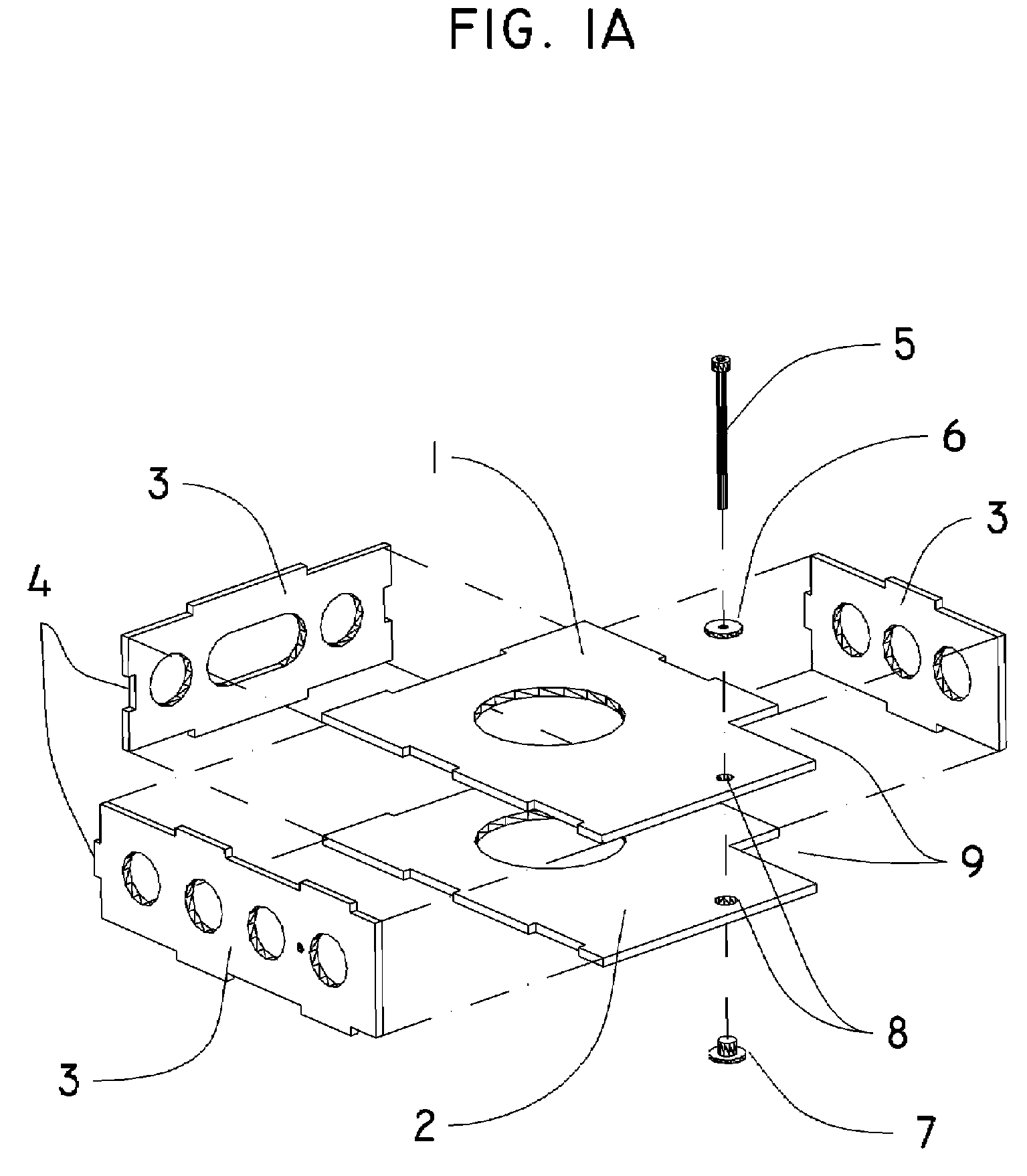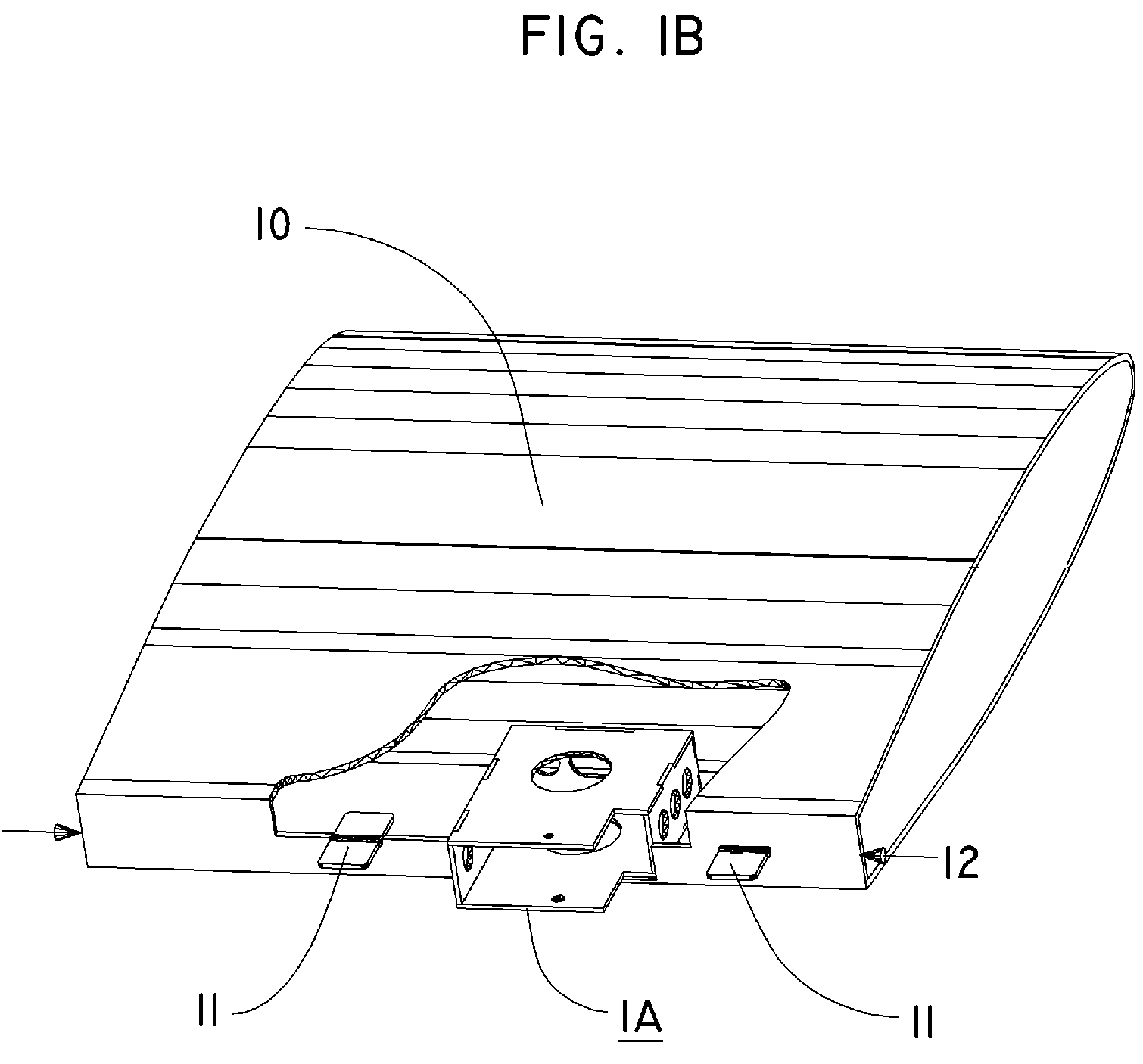Servo mounting system for direct drive of an aircraft control surface
a technology of direct drive and control surface, which is applied in the direction of actuating personally, toy aircraft, and energy-saving board measures, etc., can solve the problems of increasing the need for periodic maintenance and part replacement, increasing the geometry of a link or cable, and increasing the wear of the servo bearing and control hing
- Summary
- Abstract
- Description
- Claims
- Application Information
AI Technical Summary
Benefits of technology
Problems solved by technology
Method used
Image
Examples
Embodiment Construction
[0068]Although the direct servo drive mount is not limited to a particular aircraft size, material of construction, servo size or servo type—for ease of illustration the following description of embodiment will reference installations in a large model aircraft of 130 inches wingspan. The aircraft is a typical large scale model design, constructed of wood and composite materials. The horizontal stabilizer 23 employs a tubular metal spar 22 onto which the horizontal stabilizer 23 is mounted, permitting removal of the stabilizer as an assembly by sliding it off of the spar 22. The servo being mounted is a generic, commercially available electro-mechanical design, loosely termed in the model industry as “standard” size, with dimensions of 0.76″ by 2.25″ by 1.5″.
[0069]The direct drive servo mount in FIG. 1A is in the form of a hollow box which is sized to the dimensions of the particular servo being used. Shown are the upper plate 1, lower plate 2, and three sides 3. One side of the moun...
PUM
 Login to View More
Login to View More Abstract
Description
Claims
Application Information
 Login to View More
Login to View More - R&D
- Intellectual Property
- Life Sciences
- Materials
- Tech Scout
- Unparalleled Data Quality
- Higher Quality Content
- 60% Fewer Hallucinations
Browse by: Latest US Patents, China's latest patents, Technical Efficacy Thesaurus, Application Domain, Technology Topic, Popular Technical Reports.
© 2025 PatSnap. All rights reserved.Legal|Privacy policy|Modern Slavery Act Transparency Statement|Sitemap|About US| Contact US: help@patsnap.com



